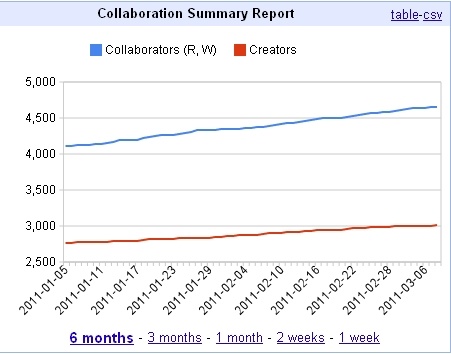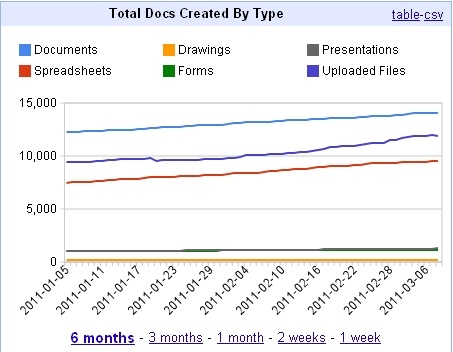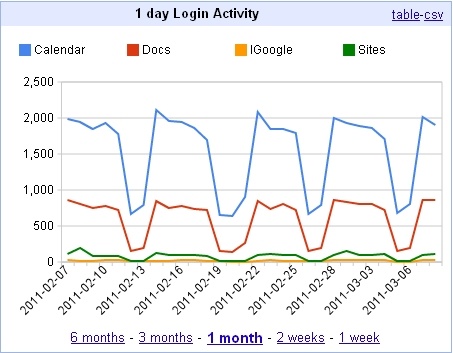IT joined other operations divisions and vendors for the Lab's annual earth day fair on April 20th. Our table featured information about our green(er) data centers initiative, how to configure your computer's power settings, and why personal printers make the pandas sad. For more information about all these initiatives, visit our Greening IT page.
Mathworks will be at the lab on April 26, Bldg 50 auditorium. Optional advanced registration can be done here.
Agenda
Presenter: |
Doug Eastman, Senior Application Engineer |
9:30 – 10:00 a.m. |
Registration and sign-in. Walk-ins are welcome. |
10:00 a.m. – 12:00 p.m. |
Session 1: Data Analysis and Visualization in MATLAB |
In this session, we will demonstrate how to acquire, analyze, and visualize data through mathematical, statistical, and engineering functions that support common engineering operations. The session also provides an overview of the MATLAB technical computing environment.
Highlights include
- Importing data from various sources
- Performing statistical analysis and curve fitting
- Automating analysis via MATLAB code generation
- Building GUIs and generating reports
12:30 – 1:00 p.m. |
Registration and sign-in. Walk-ins are welcome. |
1:00 – 4:00 p.m. |
Session 2: How a Differential Equation Becomes a Robot |
Expanding the power of MATLAB with Simulink and the Symbolic Math Toolbox
This seminar will show how the suite of MathWorks tools complement and enhance each other, and how when combining them together, the user can unleash the full potential of our complete development environment. Starting from underlying mathematical and physical principles, we will discuss the iterative process of analysis, design and optimization involved in the development and implementation of a real-world practical application. The demonstration example will examine how a simple second order differential equation can evolve into a complex dynamic model of a multi-degree of freedom robotic manipulator that includes the controls, electronics and three-dimensional mechanics of the complete system.
Highlights of the presentation include:
- Using the MuPad interface in the Symbolic Math Toolbox to create equations of motion
- Modeling complex electro-mechanical systems using Simulink and the physical modeling libraries
- Using MATLAB scripts to control and automate the simulation of dynamic models in Simulink
- Importing three-dimensional mechanisms directly from CAD packages using the SimMechanics translator
- Using the Control System Toolbox and the Optimization Toolbox directly on your Simulink model
- Creating virtual reality visualizations and interfacing with external devices using Simulink 3D Animation
- Prototyping and testing your real-time system directly in hardware with xPC Target
The IT Division is exploring the idea of making OriginLab software available for download on the IT Software site. If you have purchased an Origin license in the past or are thinking about purchasing one in the future, we would like to hear from you. Responses to survey will be viewed through May 6, 2011. Please click here for survey.
An upgrade to eRoom is planned for Sunday April 17 between 9:30am and 2:30pm. This upgrade will provide support for later versions of IE and Firefox, as well as implement some bug fixes.
Update: eRoom is operational again, as of 12:30pm, April 17.
Notes:
(1) the eRoom Plugin should work with Firefox 3.6 and IE 8. (Windows XP and Windows 7 - 32 bit and 64 bit). 64-bit Windows 7 requires 32-bit IE 8 which should be installed by default.
(2) On XP with FireFox 3.6 use this URL to upgrade the plugin (version 503.152) if you already had an older one installed and it does not seem to work
(3) On Mac 10.6, eRoom works with Firefox 3.6, 4.0 and Safari 4.0. (no plugin available however).
The new Reading Lounge is now open in 54-002, the room underneath the Cafeteria.
The lounge is currently open Monday – Friday from 6:30 am - 5:00 pm, and is staffed from 8:00 am to 3:00 pm. Staff can be reached at 495-2176.
This newly renovated lounge is home to a collection of new books that reflect the new and ongoing work the lab is doing in the fields of carbon sequestration, climate modeling, artificial photosynthesis, solar photovoltaics, energy storage, next generation light source, and others. Laptop alcoves are available along with a fantastic view of Berkeley. (Please no food; drinks in sealed containers only.)
We hope you can join us for two days of in-depth guidance and instruction on critical computing and network security topics, plus plenty of opportunities to network with your security peers from throughout the University of California. The low registration fee of $95 gives you access to lectures, panel discussions, hands-on labs, breakfasts, lunches and refreshments. Attendees will also receive an event t-shirt and conference materials. Please visit http://itsecuritysymposium.ucdavis.edu.
REGISTRATION DATES
Registration is open April 6-May 16, 2011. Pre-registration is required. There will be NO on-site registration for the conference.
CHOOSE YOUR SESSIONS
Please pre-select the sessions you would like to attend using our online registration system. This system allows us to track session enrollment numbers and move popular sessions to larger spaces, if needed. However, seating in some sessions – particularly the hands-on labs – is limited and many will fill up quickly. In the event of overcrowding, session rosters will be used to guarantee that pre-enrolled attendees are seated. To ensure your seat in the sessions you want to attend most, be sure to register early.
HOUSING
Information on local housing options for out-of-towners is available on the symposium website.
PAYMENT
For UCD employees, please enter your departmental fund code. Other UC campus employees can enter an inter-campus fund transfer code. Others can use a credit card --- please note the special instructions for
credit card processing.
PARKING
If you plan to bring a car to campus, please be aware that parking permits are required. Permits from other campuses are accepted. You can also buy UC Davis parking permits at the lot kiosks when you arrive.
QUESTIONS?
Contact [email protected].
Hope to see you here!
2011 IT Security Symposium Planning Committee
Are you running out of space in your office? Are you moving to a new office? Is the size of your office being reduced? Are you responsible for dealing with the records of retiring (or already retired) scientists? Are you wondering what to do with all the files you are responsible for--which ones need to be kept, which can be archived, and which can be disposed of, all in compliance with Lab and DOE regulations? This month, as part of Records and Information Management Month (RIMM), you can get the answers to these and other questions by attending a 1.5 hour workshop being put on by the Archives and Records Office, along with the Berkeley Lab Learning Institute (BLI0926). When? on Monday, April 18, from 10:30 AM to 12:00 noon. Where? in Building 2, Conference Room 100B. Go here to register.
THESE SEMINARS ARE PROVIDED BY MATHEMATICA AND NOT BY IT
===============================================================================
New seminar titles featuring the latest technologies in Mathematica 8 are available to the technical computing community.
Here is what participants are saying:
"The GPU team at Wolfram Research has accomplished a minor
miracle with GPU programming, providing an environment to make it
easier than can be found with any other application to apply it
to problems..."
"There was a complete review of the themes that I was looking
for..."
Seminars vary from introductory overviews to advanced specialty
topics and are presented by actual Mathematica developers and
senior technical staff. Below are dates and times of our upcoming
live online seminars. Times are U.S. Eastern Daylight Time (EDT).
These seminars are free!
S70: GPU Computation Using Mathematica and CUDA
April 4, 2pm PDT
S11: What's New in Mathematica 8
April 5, 7am PDT
S20: Statistics and Data Analysis with Mathematica
April 6, 7am PDT
S24: Working with Imported Data in Mathematica
April 7, 3pm PDT
S25: Image Processing with Mathematica
April 8, 9am PDT
S45: Wavelet Analysis in Mathematica
April 12, 9am PDT
S27: Got Manipulate?
April 12, 3pm PDT
Attend as many seminars as you like. See the complete calendar here:
http://www.wolfram.com/services/education/seminar.cgi
On Tuesday, April 12, 2011, LBNL's Chemical Abstracts Service (CAS) representative Jennifer Sexton will be visiting LBNL from 10:30am-11:30am in Pers Hall (54-130). Registration is encouraged by filling out the online form:
https://spreadsheets.google.com/a/lbl.gov/viewform?formkey=dGlITWVnU2RPcHhUSEN6amhYZk1lc3c6MQ
Jennifer will present the latest features shown below.
View experimental procedures
1. View experimental procedures (covering the period of 2005-2009) from six American Chemical Society journals as well as patents from the USPTO, EPO, and WIPO. 2. Examine, sort, and analyze experimental procedures for applicability to their synthetic research needs and more efficiently determine lab preparations and plan synthetic pathways.
Sort search results by relevance
Relevance ranking (as determined by Tanimoto similarity) is now the default sort order for reaction answer sets. This will speed review of answer sets and reduce the need to navigate through large answer sets since the most relevant answers will be presented first.
Structure drawing
1. Keyboard shortcut functions allow you to quickly highlight and change an atom or bond in a structure drawing. 2. Clickable bonds make it easy to change bond types from single to double to triple and easily sprout bonds from a carbon atom. 3. Structures generated in ChemDraw can simply be pasted into the SciFinder structure editor.
Reaction search and display
1. Specify non-participating functional groups or functional group classes you want to survive the reaction unchanged or limit reactions by specific solvents of interest. 2. Structures generated in ChemDraw can simply be pasted into the SciFinder structure editor. 3. Pull supplier information on chemicals in your reaction scheme using icons indicating commercial source availability
Get structures more efficiently using SMILES and InChI strings
Chemists can now save time drawing structures by converting InChI (International Chemical Identifier) or SMILES (Simplified Molecular Input Line Entry Specification) text strings within the drawing editor into graphic representations of specific substances.
If you are confused by the Web version of Gmail or just need more information on the functionality of Google mail and calendar, consider registering for a hands on Class Tuesday morning, March 22. Register for ITD0200 here.
Class Content
Using Google Mail, Google Calendar & Organizing Contacts
- Overview of Gmail user interface
- Composing new messages
- Managing conversations
- Searching your Mail
- Organizing mail using labels and stars
- Creating signatures and vacation responders
- Attaching and opening files
- Adding and Organizing Contacts
- Using Google Chat
- Overview of the Google Calendar
- Changing the Calendar Views
- Scheduling Calendar events
- Updating and changing events
- Searching your Calendar
- Using multiple calendars
- Setting up notifications
- Sharing your Calendar with other Google Apps users
- Working with invitations
- Scheduling resources
Google has launched a set of powerful new commenting features in Google Docs. Now, you can group comments together, use @mentions to call out people for comments, respond to comments via email and have those appear seamlessly in the document, and resolve and collapse comments to remove them from the page (but still view them later). It's best explained by watching the short video below. The features are only available in newly created Google Documents.
Webspace, the online file storage service provided by IT, will be down for maintenance beginning at 6pm on Friday, March 25th. The outage is expected to last five hours.
The upgrade is generally intended as a 'bug fix" release, but there are a couple of functional improvements worth noting:
1. A new Thumbnail view is an option for viewing folders and files
2. Some minor improvements to the workflow engine
3. Performance improvements when doing web based displays of a large number of entries (hundreds of files located in a single directory, for example)
4. The Help System has some improvements when searching for content
The dropbox functionality is something you may want to take advantage of. A dropbox can be created to allow other users to upload content without seeing what anyone else is uploading. Useful for proposal submissions, for example.
If you have any questions, please contact the helpdesk.
Google Contacts for the Lab's Google domain has been upgraded so it looks like the consumer version (which has been available for several months). For Google's blog on this change, go here.
Some of the new features include:
- Keyboard shortcuts (go to Contacts and hit "?" for the full list)
- Sort by last name (look under "More actions")
- Custom labels for phone numbers and other fields
- The ability to undo changes you've just made
- Automatic saving
- Structured name fields, so you can adjust titles, suffixes, and other name components
- A bigger, more prominent notes field
Camtasia Relay version 3.0 is available for pilot testing. Camtasia Relay captures and publishes your lecture or presentation (anything that's happening on your computer screen, plus audio) and publishes it to the Lab's screencast.com account. You can also choose other video formats for download, such as .avi for Quicktime or .wmv for Windows Media Player.
If you'd like to try Camtasia Relay, log in with your ldap username and password at http://relay.lbl.gov. Click on "Download Recorders" and download the recorder for your operating system. For more information, please see our Camtasia Relay FAQ.
The Lab community is expanding it's use of Google products in many areas. For a quick look at some metrics, we are providing some screen shots of some of the more interesting trends.
In the graph below, it is evident that many more people at the lab are using Google Calendar than was the case with Oracle Calendar. Our Fall survey of the lab concerning Google adoption indicated this was going to be the case. Google docs is also a popular addition to our portfolio of collaboration tools.
The next Graph indicates an increased use of Google docs for sharing - the number of users who are collaborators on someone else's document is growing. Some of these are external to the lab - evidence that Google is providing a great tool for many lab employees
We were surprised by the number of Google Documents that have been created. Uploaded files remains small (these represent content that is not converted to a Google doc - MS Office and PDFs primarily). We think use of the internal Google document which allows simultaneous editing by anyone who has rights to do so is a major step forward in real time collaboration.
Finally, it is interesting to observe how much activity there is in any given day.



